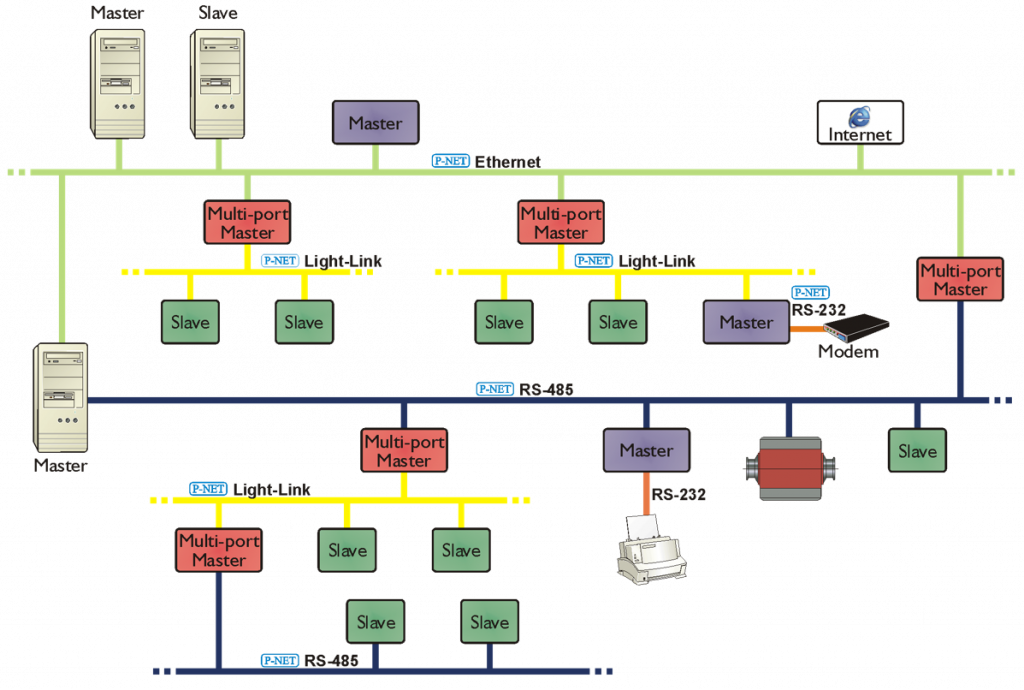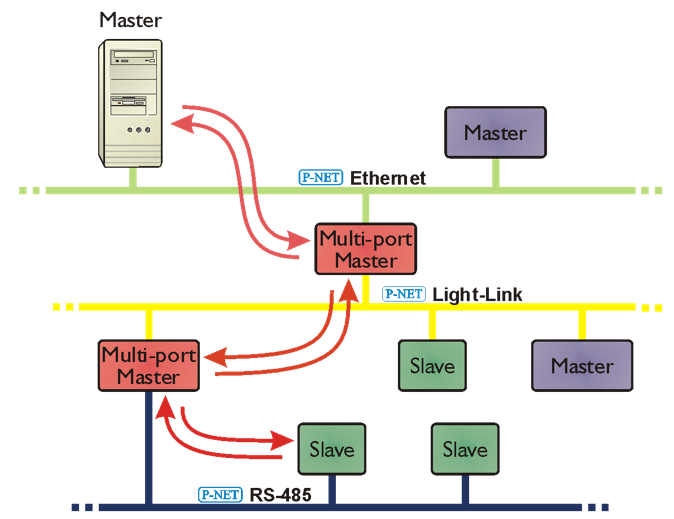P-NET Multi-master and Multi-net structures

Multi-master
P-NET is a Multi-master protocol. This is very important, since one of the main advantages of a fieldbus is that it promotes distributed processing, and doesn’t rely on a single central processor.
P-NET uses a method called “virtual token passing”, which does not require messages to be sent over the bus. When a master has finished bus access, the token is automatically passed on to the next master, by a cyclic mechanism based on time. The method used in P-NET differs from that used in other multi-master systems.
Up 32 to masters are allowed per bus segment.

Multi-net structures
A factor which is regarded as a unique feature of P-NET, is that it is also a Multi-Net protocol.
The advantageous implications of this attribute are that a plant or system can be easily divided up into autonomous cells. Each cell or net is able to inter-communicate through a dual (or n) port master, without any additional software overhead.
This feature also provides natural redundancy facilities, which have, for example, been found to be an absolute necessity in control systems installed on ships requiring Lloyd’s approval. The end result of such a distributed multi-master, multi-net fieldbus, is that a plant or control system becomes a cellularised but also a monolithic parallel processor.
Any number of P-NET fieldbusses can be networked using Controller Gateways (standard units) without further software expense.

Transparent access through multi-net
Direct access through several nets without special programming or configuration





